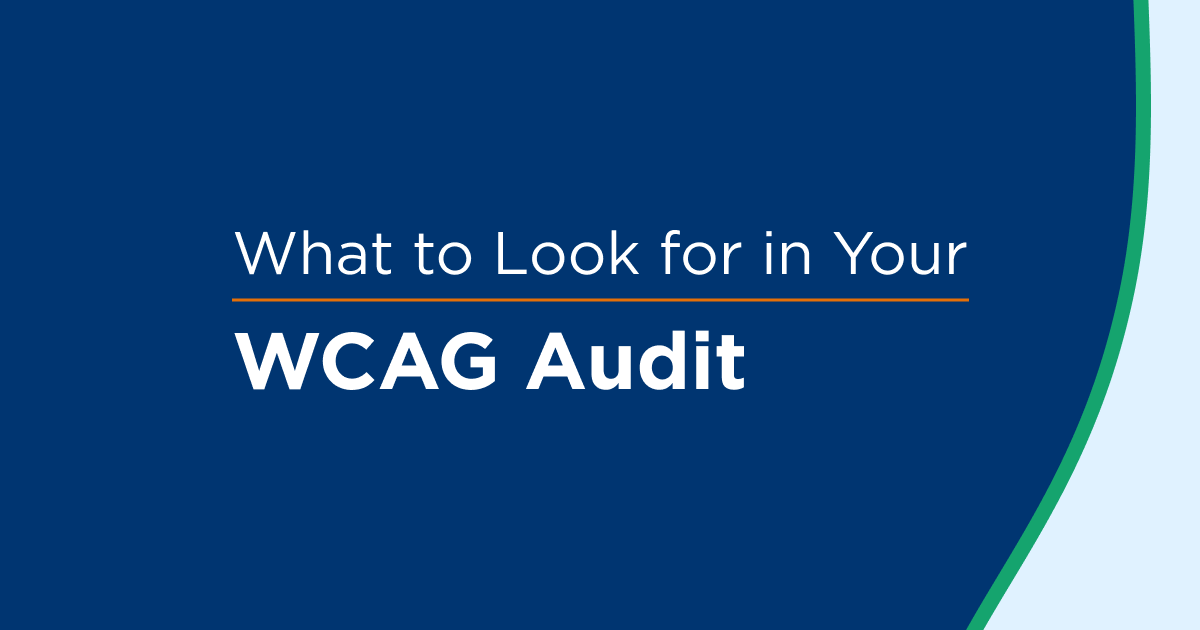A website accessibility audit is the first step toward improving your web accessibility for everyone. But not all audits around the Web Content Accessibility Guidelines (WCAG) are created equal. Knowing what to look for can help you focus on meaningful improvements rather than just a list of errors.

See how UsableNet Audits help you plan for accessibility
1. A Clear Scope and Methodology
Before your website audit starts, you should understand exactly what’s being tested. A strong digital accessibility audit will:
- Cover key user journeys, not just the homepage. Think login, checkout, forms, and other critical interactions.
- Be done against a recommended standard. WCAG 2.2 AA is the current standard to use for an accessibility audit
- Include automated and manual testing. Automated tools catch lower-level accessibility issues, but expert manual assessment uncovers problems that technology alone can’t detect.
2. Prioritization of Issues
An audit isn’t a list of issues to fix. It’s a tool to build a roadmap. Look for WCAG audits that provides ways to prioritize issues based on impact and severity, including:
- Barriers that prevent users from completing tasks (high priority).
- Repeated issues across templates or components.
- Quick fixes that deliver early wins.
- Disregards duplicate issues so you’re not wasting time fixing the same problem multiple times.
- Filterable by job responsibility so developers, designers, QA, and other teams can see the issues most relevant to their role.
A good WCAG audit helps you understand what matters most to your users and where your team should focus first.
Test your website’s accessibility now and get real-time feedback in minutes →
3. Accessibility Beyond Compliance
While meeting standards like WCAG 2.2 is important, an audit should also provide real-world usability snapshots that:
- Help build your remediation Program
- Communicates the impact on specific disabilities
The ultimate goal is to achieve accessibility and usability for people with different disabilities. Most ADA lawsuits in the United States will list usability issues found by blind plaintiffs, so an audit that focuses on accessibility and usability will both reduce your legal risk and improve accessibility.
See the latest web accessibility compliance updates →
4. Actionable Recommendations
A list of issues isn’t enough. A web accessibility audit should provide clear, practical guidance on how to fix problems, including:
- Code snippets or examples for developers, only possible if audits include code review.
- Design adjustments for designers.
- Suggested priorities and timelines for remediation.
5. Documentation and Reporting
Finally, the audit should create a record of your accessibility efforts:
- Detailed reports showing what was tested and what was found.
- Evidence of issues fixed over time.
- A baseline to measure progress in future audits.
- Different reports tailored to different audiences—high-level summaries for executives, detailed, technical guidance for developers, and actionable insights for designers.
Proper documentation not only helps your team track improvements but can also demonstrate due diligence if legal or regulatory questions arise.
The Bottom Line
A thoughtful accessibility audit identifies real barriers for users, provides clear steps to fix them, and lays out the foundation for ongoing accessibility success.
When evaluating an audit, look for:
- Comprehensive scope
- Prioritized findings
- Focus on usability, not just compliance
- Actionable guidance
- Clear documentation
The right audit turns accessibility from a checklist into a strategic roadmap, guiding your team toward a more inclusive digital experience that benefits both users and your organization. With the audit complete, you’re equipped to start the real work of accessibility: building, fixing, and improving with clarity and purpose.
Want to get started? Contact us to learn more about our audits and how our solutions can help you achieve and maintain accessibility.






